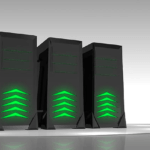A modular data center is not so much a physical thing, but an approach that is used in creating data center designs that are contained. Most of these designs tend to be prefabricated. This approach is now used to design IT, cooling and power solutions and products.
Install Modular Data Center

Before you consider a modular data center, you should ponder on the following points:
1. Do you have enough space?
You don’t need a lot of space for a modular data center as they usually come in the size of a container unit that can fit in a room. Consider how much room you have and whether it’s possible to stack several containers or lay them side by side in a room. Unless you really need to, avoid the inclination to build a full-fledged data center.
2. How fast do you need your data center up and running?
Modular designs are faster to deploy as they involve lesser construction on site. With a modular design, you can have your data center running in a few months. If you decide to go with full on data center construction, it could take you more than a year to deploy.
3. Do you have an issue with security at the construction site?

As you don’t require a lot of people during assembly and installation of a modular data center, you will not face too many security risks. Having lesser people in a construction site is critical if you are working on a project that needs to remain confidential and secure.
4. How flexible do you want the design of your data center to be?
There are several factors to consider when thinking about flexibility:
- Ease of fulfilling operational requirements.
- Does the design support change of operational procedures?
- Does the design integrate well into your other existing IT infrastructure?
- Is it easy to implement and change equipment?
5. What is the budget?
Another question to ask yourself is the amount of money you are working with. When installing a data center, look for solutions that will fit within the budget. If you start installing non-critical technology, you will go over budget.
The same principle also applies if you are making these installations for someone else. Start by understanding the business model of your client and create a facility that will have all the required characteristics at a friendly budget, but without being limiting.

If you are not good with budgeting, get someone to help you in this area, otherwise you will sink money into a model that will not provide the necessary solutions.
6. What are the operational requirements?
Your data center has to be easy to upgrade or to upscale in the future. Future processors and servers are bound to come with increased power densities which could render your cooling systems redundant. Technology changes at a very rapid rate and your modular design should accommodate future additions and changes to power capacity and cooling systems.
As you build a budget, factor in the costs of future modifications as they might need to be implemented sooner than later.
7. Is the module Energy efficient
Research conducted into existing data centers shows that they exceed electricity consumption of a normal office space by up to 200 times. With increased demand for cost cutting, design teams now have to be conscious about energy efficiency and come up with modular designs that consume lesser electricity.
If you are retrofitting a data center out of an existing space, understand the electrical system in the space to prevent instances of losing power and cooling ability, which will result in data center downtime and repair expenses.
To create a data center that is energy efficient, take the following measures:
• Look for ways to make savings
A lot of the costs associated with running a data center result from power consumption. A few modest changes and technical know-how can help you optimize your data center’s capability while saving energy. For instance, you should be able to assess the amount of energy used to cool the data center and the amount of energy emitted in the cooling process and take measures to balance the two.

Ensure that the existing cooling equipment can be modulated to cater for lower loads to avoid wastage.
• Manage your cables
Cables and other equipment can clog up a space and stifle air circulation, which in turn causes overheating. During the installation process, find ways to implement a cable management system in the whole room. You can route cables overhead, along racks or along the edges of the walls, a process that will eliminate all hot spots in the data center. If you have piled your modular data systems on racks, install air intake and air discharge channels.
• Pay attention to consumption density
You need to identify and specify the exact amount of power used by each data center. If you have data centers that were fitted years ago, you need to retrofit them to accommodate the power density requirements of today.
No matter the size of your facility or the density of its consumption, you have to take measures to contain and separate cool air and warm air. If you don’t isolate hot air from the cold air, you will have an inefficient system that costs a lot of money in energy consumption. You can resolve hot air problems by containing it and redirecting it into the cooling system.
An in-row system for cooling is great for retrofit data centers as you can build it incrementally as you expand into your space.
Bottom line
The bigger your data center, the more power issues you will have. You can calculate the PUE rating of your data center to find out how efficient your system is. This rating compares the amount of power channeled into a facility against the power consumed by the equipment inside the building. The lower the PUE (ideally 1.0), the better.
Of course all these power consumption issues are easily solved by the installation of a modular design.
Using a modular approach will help you see your space in sections, whereby you create mini data centers. For instance, if you have a room of 5000sf, you can create four data centers each of 1250sf. This will allow you to take care of any future technology refreshes, power consumption issues and operational requirements.
A modular approach will give you tighter controls.
Join 25,000+ smart readers—don’t miss out!




![7 Questions to Ask When Installing a Modular Data Center 7 [HostGator Sale] – HostGator Anniversary Sale Coupon | Flat 65% OFF](https://justwebworld.com/wp-content/uploads/2014/10/HostGator-65-OFF-Coupon-150x150.jpg)



